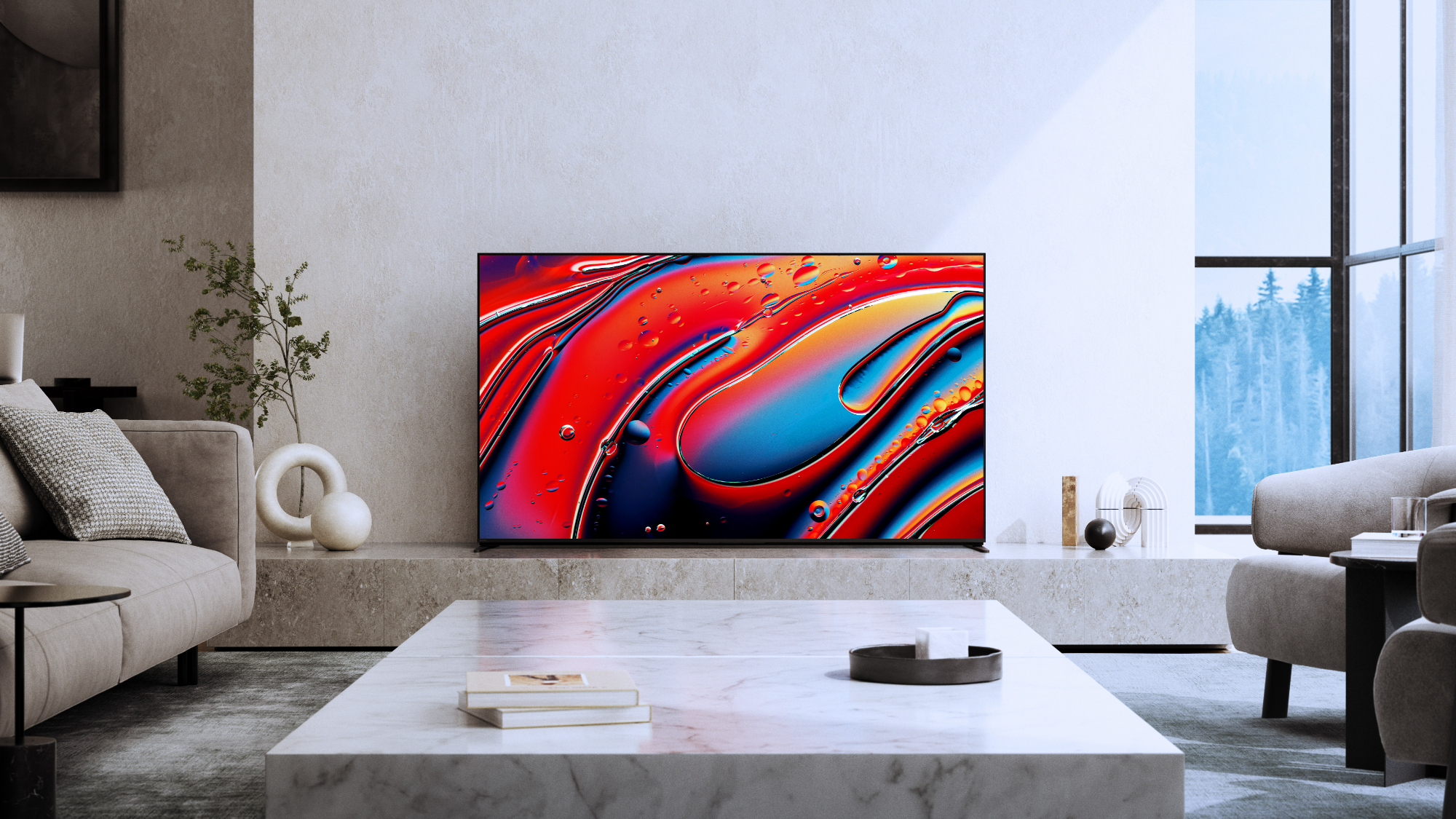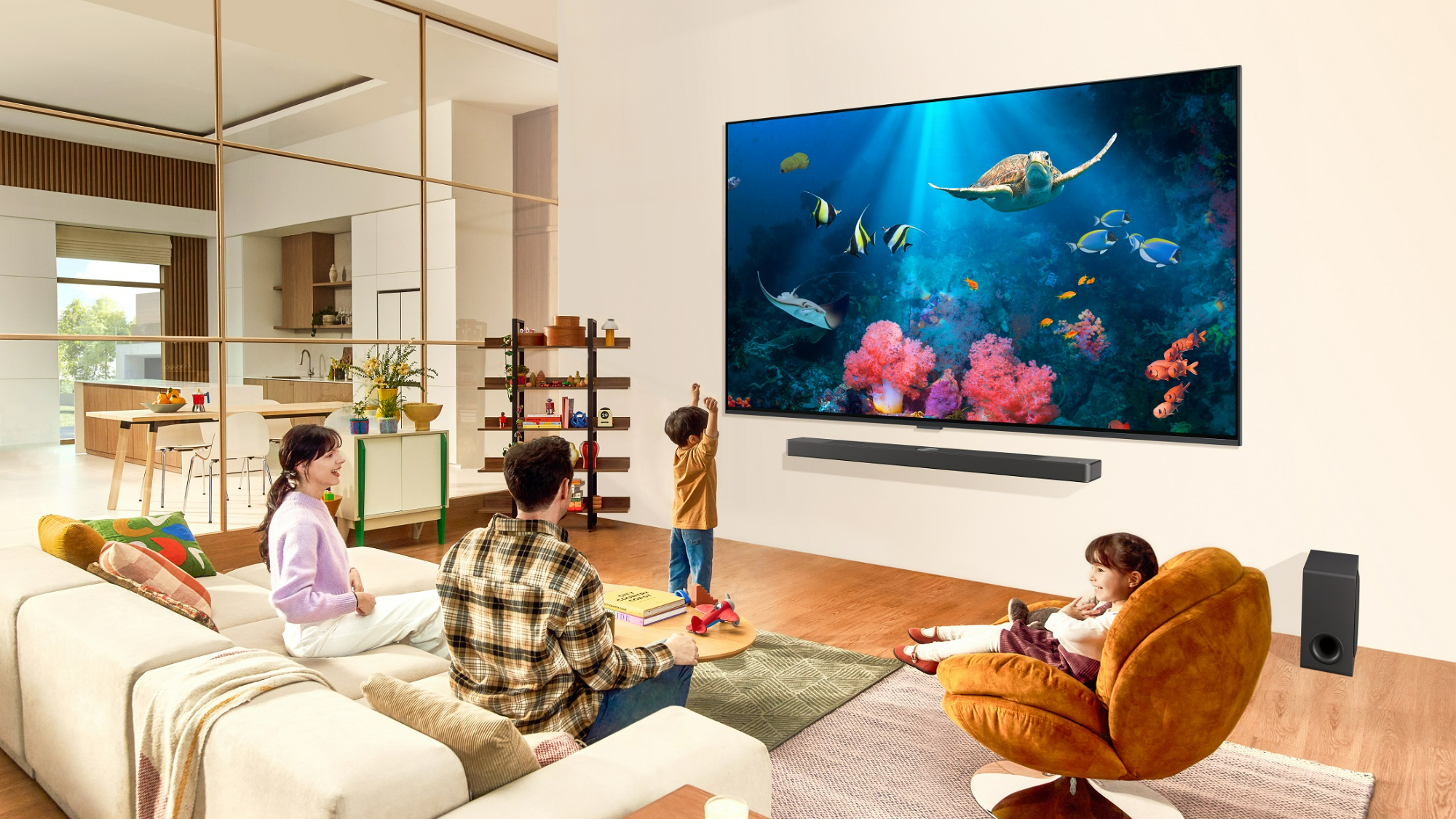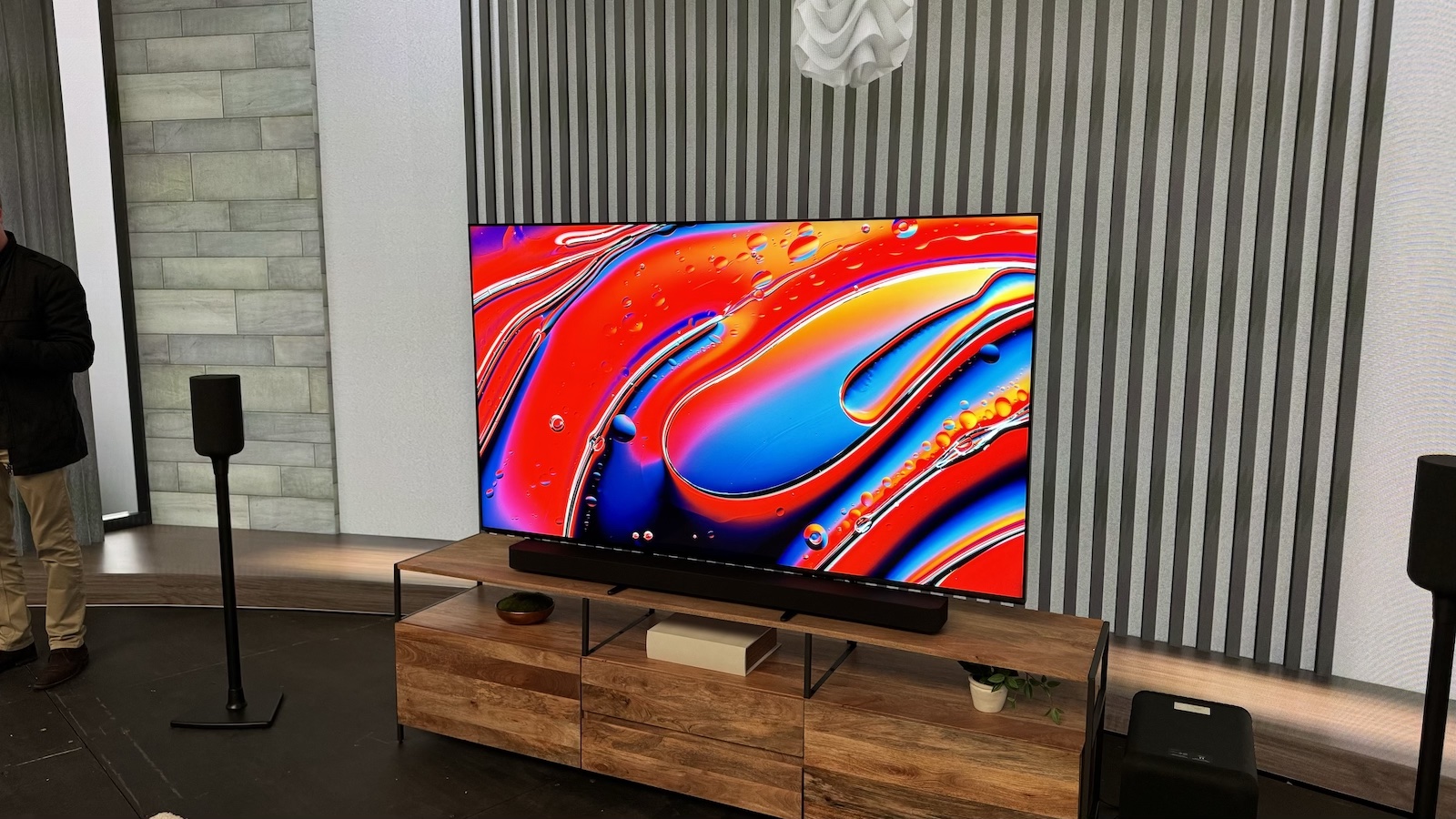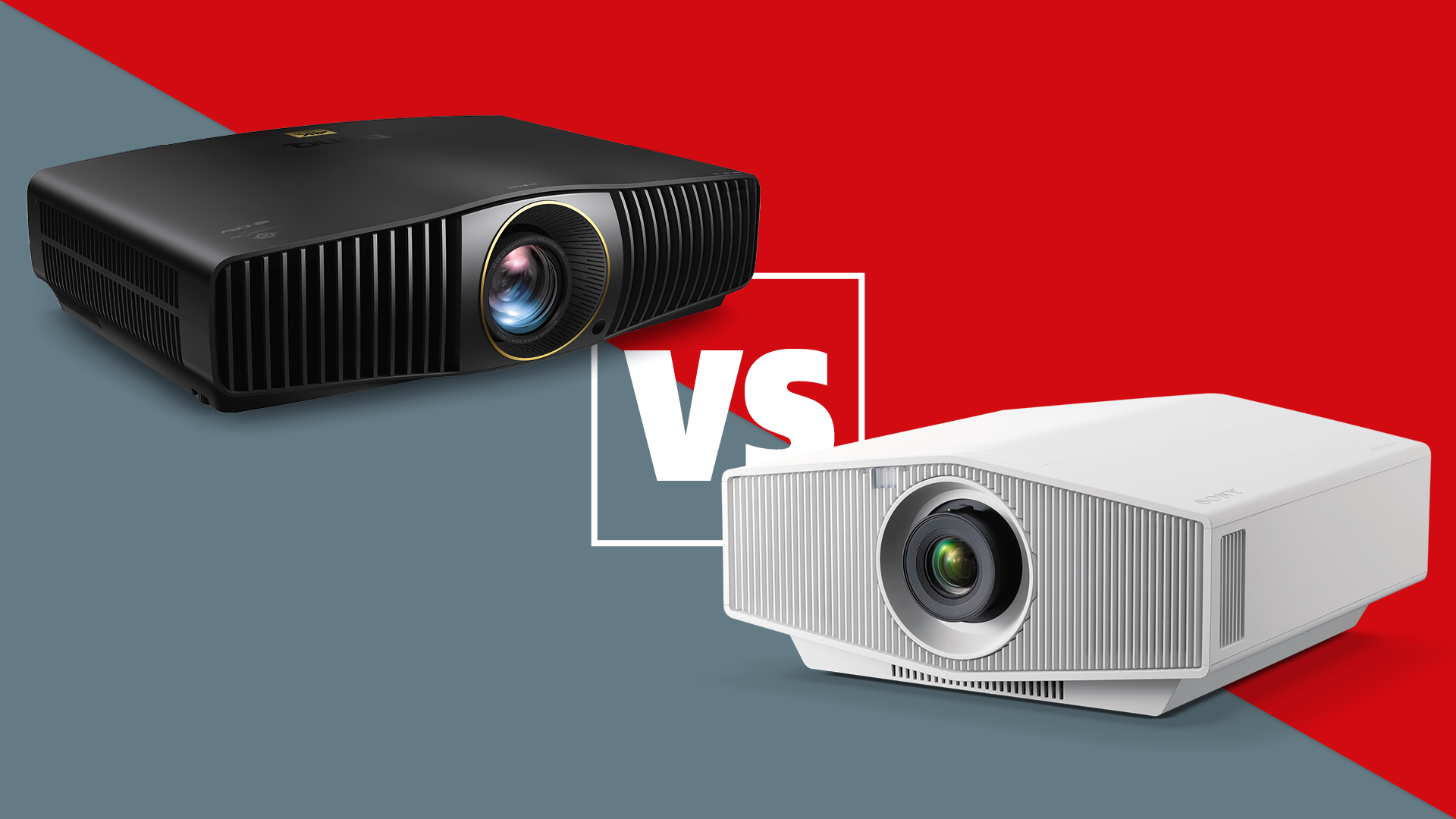Mini LED TV: everything you need to know about OLED TV's premium rival
The A-Z on the LCD TV technology, and how it differs from the similarly named MicroLED tech

OLED may have been riding high as the top TV type for quite a few years now, but backlit TVs are making a comeback. The new tech on everyone's lips is Mini LED, with more and more manufacturers creating TVs that use it. Sony even chose it over OLED for its flagship 2024 TV, the Bravia 9. So what's so good about it?
Don't confuse Mini LED with MicroLED. Mini LED is an OLED rival for the here and now, while MicroLED is a very intricate – and currently very expensive – proposition that promises to one day be the gold standard of TV. But that day's a way off yet.
Here we'll explain what Mini LED is, how it compares to LCD, OLED and MicroLED, and whether you should buy a Mini LED TV.
- Best Mini LED TVs: which ones should you consider?
What is Mini LED?

Like OLED, Mini LED is a premium technology that doesn't feature on cheaper TVs. It's an evolution of classic LED tech that delivers better contrast control and deeper blacks.
All LCD TVs use a backlight to provide the light source for your TV viewing. In recent times that backlighting has come in the form of LEDs, numbering in the hundreds. Mini LED takes that a step further by using LEDs which are are much, much smaller. About one-fortieth of the size of regular LED backlights, they resemble tiny particles of glitter.
The big advantage is that it's possible to have many more of them for each TV. It's about a ten-fold increase, with them numbering the thousands and arranged into more dimming zones than before.
More subtle light control means better contrast, both in terms of absolute dynamics but also, usually, it means an increased and more complex array of simultaneous lighting levels. That makes for more precise shading and a better sense of depth to the picture, and more realistic and nuanced colour reproduction than your average LCD TV.
The latest hi-fi, home cinema and tech news, reviews, buying advice and deals, direct to your inbox.
Mini LED TVs can reach a higher peak brightness than an OLED TV – Sony's Bravia 9 claims to hit 4000 nits, which is 1000 more than the top OLED models from Samsung, Philips and LG. Because Mini LED gives greater control over what portions of the screen are dark, it's easier to achieve deep blacks too. Theoretically, as the LED backlights do not control every single pixel individually, Mini LED TVs shouldn't be able to produce quite the same depth of lights-off blacks that OLEDs can. That said, we've been very, very impressed with the black depth of the Mini LED TVs we've tested so far.
Mini LED vs MicroLED: what's the difference?

MicroLED technology is more similar to OLED than LCD in that it is also a self-emissive technology – meaning each diode can individually turn on and off the light of each pixel, and the colour and intensity displayed by one can be different to the colour displayed on the one directly next to it.
MicroLED sets, such as Samsung’s The Wall and Sony’s Crystal LED TVs, are similar to OLEDs in their self-emissive properties, then, but instead of using organic light emitting diodes they use tiny, non-organic LEDs – three (red, green and blue) per pixel. The fact they're not organic means they should have a long lifespan and not succumb to fading, they should be capable of much higher brightness, and they're power-efficient because they don't need to shine through a colour filter.
Each pixel requiring three LEDs does, however, mean a 4K set requires 25 million of the tiny things, and mass producing these in perfect alignment and with no variation in brightness is a serious challenge. Because of this, and the benchmark quality these TVs should produce, be prepared for the first MicroLEDs to be super expensive (think five figures), as Samsung's The Wall installation is.
Mini LED is a much less intricate technology than MicroLED, then, and can be seen as a transitional technology between traditional LCD and MicroLED – and as a (relatively) affordable alternative to OLED.
- TCL's first MicroLED TV is pricey, but could hint at the future of next-gen TVs
What Mini LED TVs are available?

As you would expect, marquee brands like Samsung and Sony were among the first to launch Mini LED TVs. But the tech is no longer just for the big hitters – even budget manufacturer Roku has a model, though at time of writing it's only available in the US.
Sony's Bravia 9 is significant because it's the first time for some years that Sony's flagship TV is not an OLED (whether this heralds the beginning of the end for OLED, or Sony is just testing the waters with Mini LED is open to debate). In our hands-on we found it to be astonishingly bright and punchy, with a really impressive level of cinematic authenticity. But on the downside, it couldn't match the best OLED TVs for black levels or viewing angles, so there is still work to be done. The backlighting tech also means there's no room for Sony's excellent actuator-based sound system (which creates audio by vibrating the screen) – we'll see how its sound fares once we've given it the full review treatment.
It's also telling that Sony isn't launching the 65-inch model of Bravia 9 in the UK. Brits are limited to 75- and 85-inch models. Which marks it out as a rather niche proposition. The 65-inch model starts at £3300 in the US, while the 75-incher is £4499 / $4000 (Australian pricing is still to be announced).
Sony's Bravia 7 is also new. This Mini LED TV promises to be 30 per cent brighter than the X90L that it replaces (which was a 'standard' LCD model), with eight times as many dimming zones. The X90L was a five-star TV, so we're excited what Sony can do with a mid-range Mini LED model. It starts at £1899 / $1900 for the 55-inch model (Australian pricing is TBC).
Samsung's flagship Mini LED TV for 2024 is the QN95D. At £3699 for the 65-incher (US and Australian pricing is TBC), it's priced slightly above the S95D QD-OLED model. Samsung is hoping its wide-angle tech can help overcome the rather limited viewing angles inherent to Mini LED tech and the VA LCD panel this uses. Even the buggy sample we went hands-on with managed to impress us, with excellent black depth, a brilliantly bright picture and intense yet subtle colours. All of which bode well.
LG has a new Mini LED model as part of its 2024 QNED TV range. The QNED99T is LG's 8K model for 2024, with 120Hz gaming functionality, QNED Colour Pro and Precision Local Dimming, which LG says will deliver "vivid contrast and exceptional brightness". It's LG's first update to its 8K LED model since 2021. It's a big TV for big rooms – it only comes in 75- and 86-inch flavours.
Want something smaller? LG's QNED90T has similar specs to the QNED99T, but with a slightly older processor. It comes in a 65-inch size to go with the 75- and 86-inchers.
At the cheaper end of the market comes TCL's C855, which replaces the Award-winning C845 . It offers more dimming zones, a brighter picture (TCL quotes 3500 nits) and the same core specs. The C845 remains on sale for the time being.
These are some of the latest Mini LED TVs to launch, but older models are still on sale. The Samsung QE75QN900A earned five stars in our review – but be warned, just because it's a few years old doesn't mean it comes cheap.
MORE:
These are the best TVs right now
Mini LED vs OLED: which TV screen technology is better?
OLED vs QLED: which is best?

Becky is a hi-fi, AV and technology journalist, formerly the Managing Editor at What Hi-Fi? and Editor of Australian Hi-Fi and Audio Esoterica magazines. With over twelve years of journalism experience in the hi-fi industry, she has reviewed all manner of audio gear, from budget amplifiers to high-end speakers, and particularly specialises in headphones and head-fi devices.
In her spare time, Becky can often be found running, watching Liverpool FC and horror movies, and hunting for gluten-free cake.
